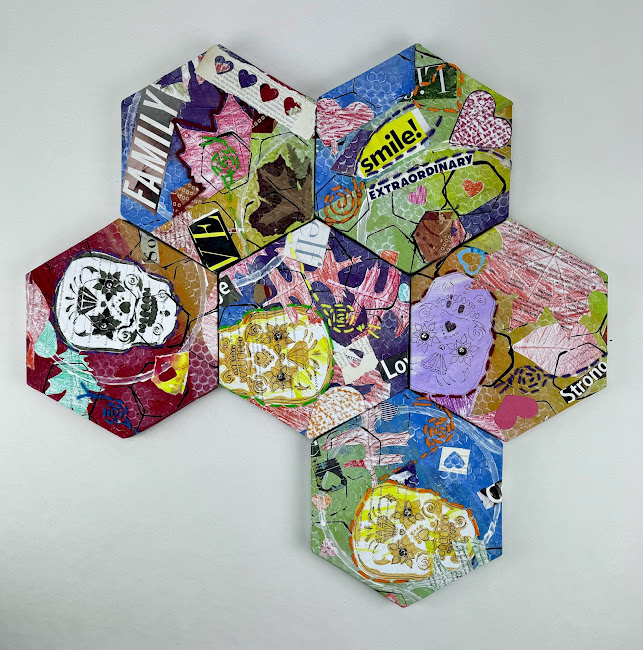Haley Deiro
As an artist and a native Nevadan with an interest in our unique high desert ecology, I used the collaborative Honeycomb Project as a means in which to bring attention to the often misunderstood and overlooked pollinators in the area. Many people are familiar with the obvious daytime workers such as honeybees, hummingbirds and butterflies, but few equate these iconic pollinators with their counterparts who clock in for the nightshift.
Nocturnal pollinators such as bats and moths are understudied, especially when compared to diurnal ones. While bats can be spooky and moths can be pesky, they’re vital to Nevada’s ecosystem and need our protection. Southern Nevada is visited by pollinating species like the Mexican long-tongued bat, the pallid bat and the white-lined sphinx moth. These nightshift workers and the plants they pollinate have developed unique symbiotic relationships to survive. Desert plants and cacti often have fragrant, light colored night blooming flowers to conserve water. The scent lures pollinators in and colors make flowers easier to find in moonlight. Datura, saguaro, organ pipe cactus, yuccas and agaves are a few examples of plants that benefit from nocturnal visitors.
Without these nightshift workers, we would suffer a massive disruption to our ecosystem. Bats specifically greatly contribute to food production, help desert plants thrive, and restore soil. Preserving bats and their habitat helps preserve us and our habitats. The purpose of my approach to this project is to dispel myths by changing commonly held perceptions of bats from demonic villains to what they truly are – ecological superheroes. By helping to shift attitudes towards these denizens of the dark, we replace fear and ignorance with understanding and appreciation. My hope is to break maligning stereotypes surrounding these incredible creatures; promote peaceful coexistence between humans and nocturnal pollinators and to encourage compassionate conversation through art



Comments
Post a Comment